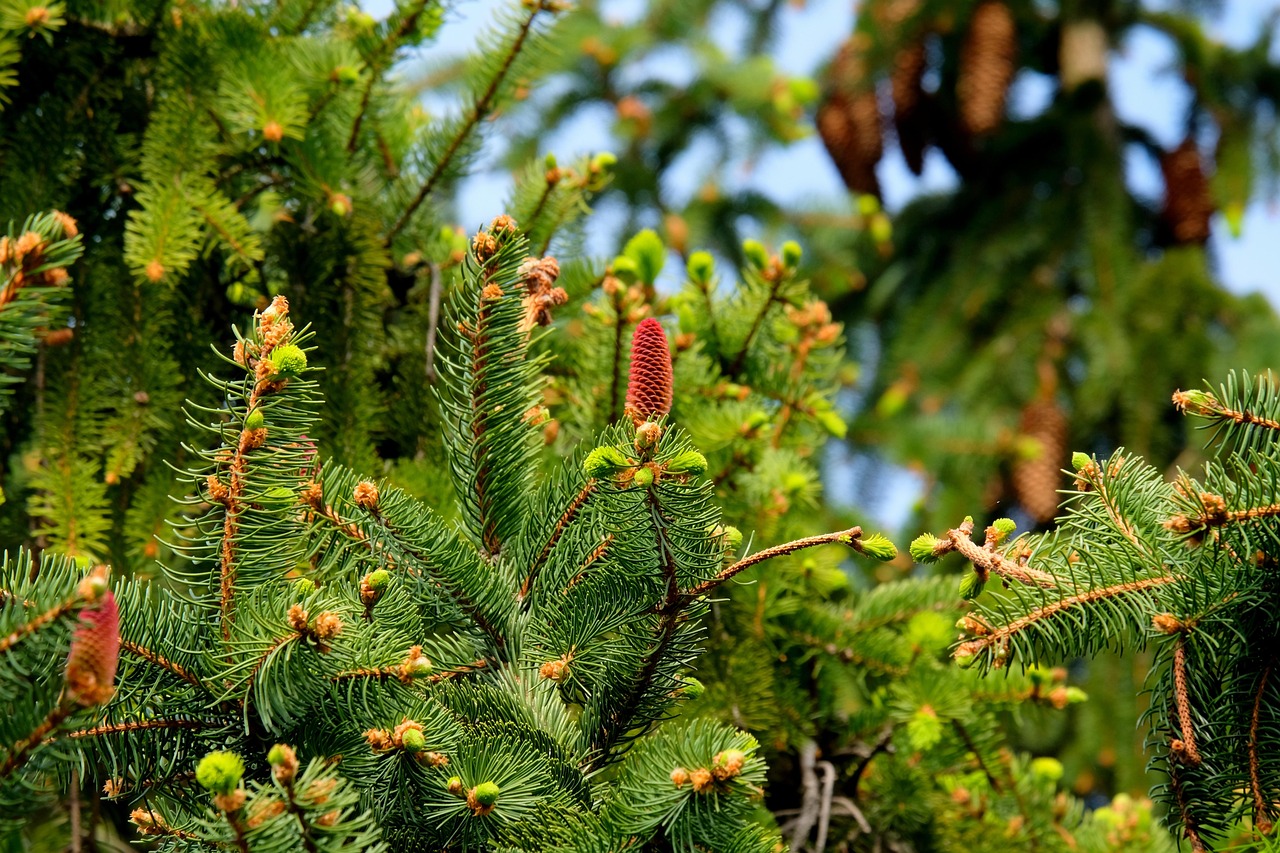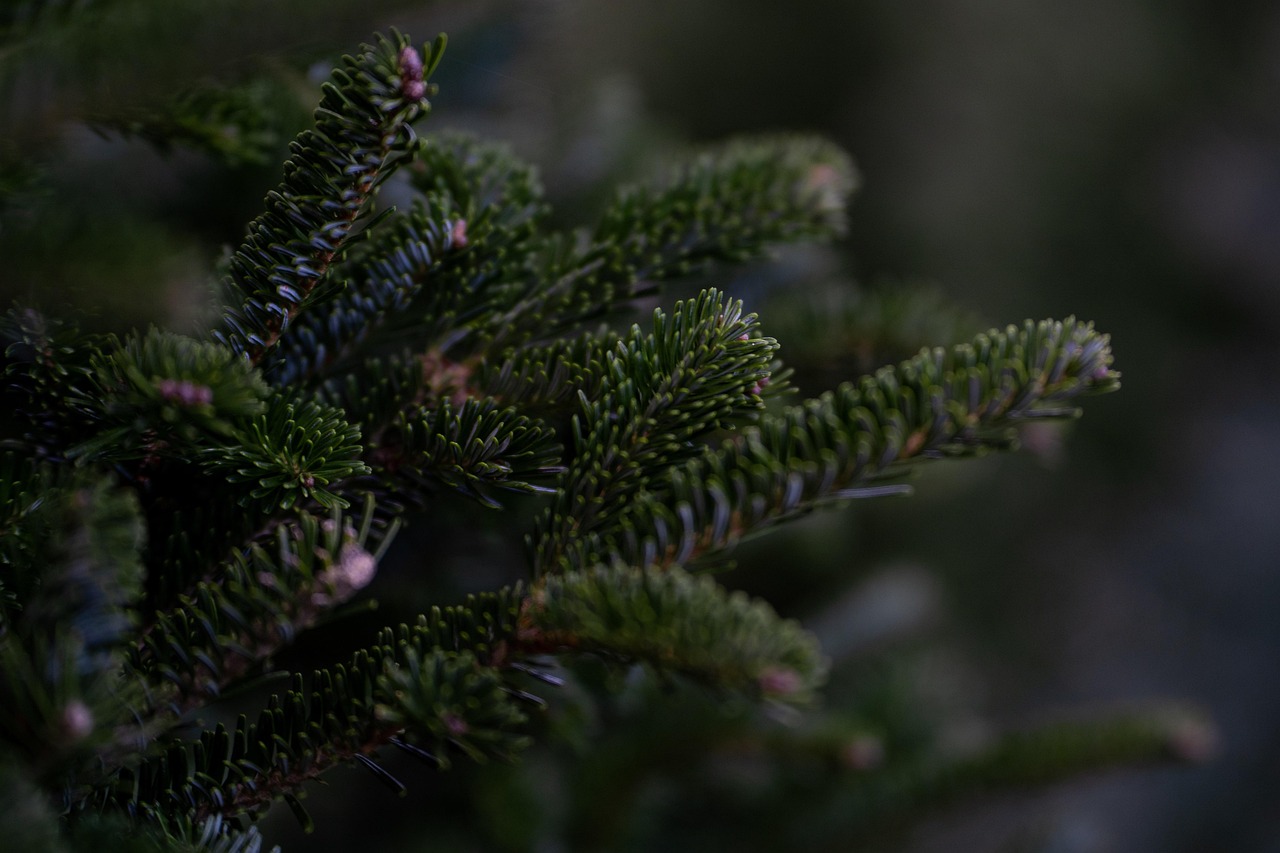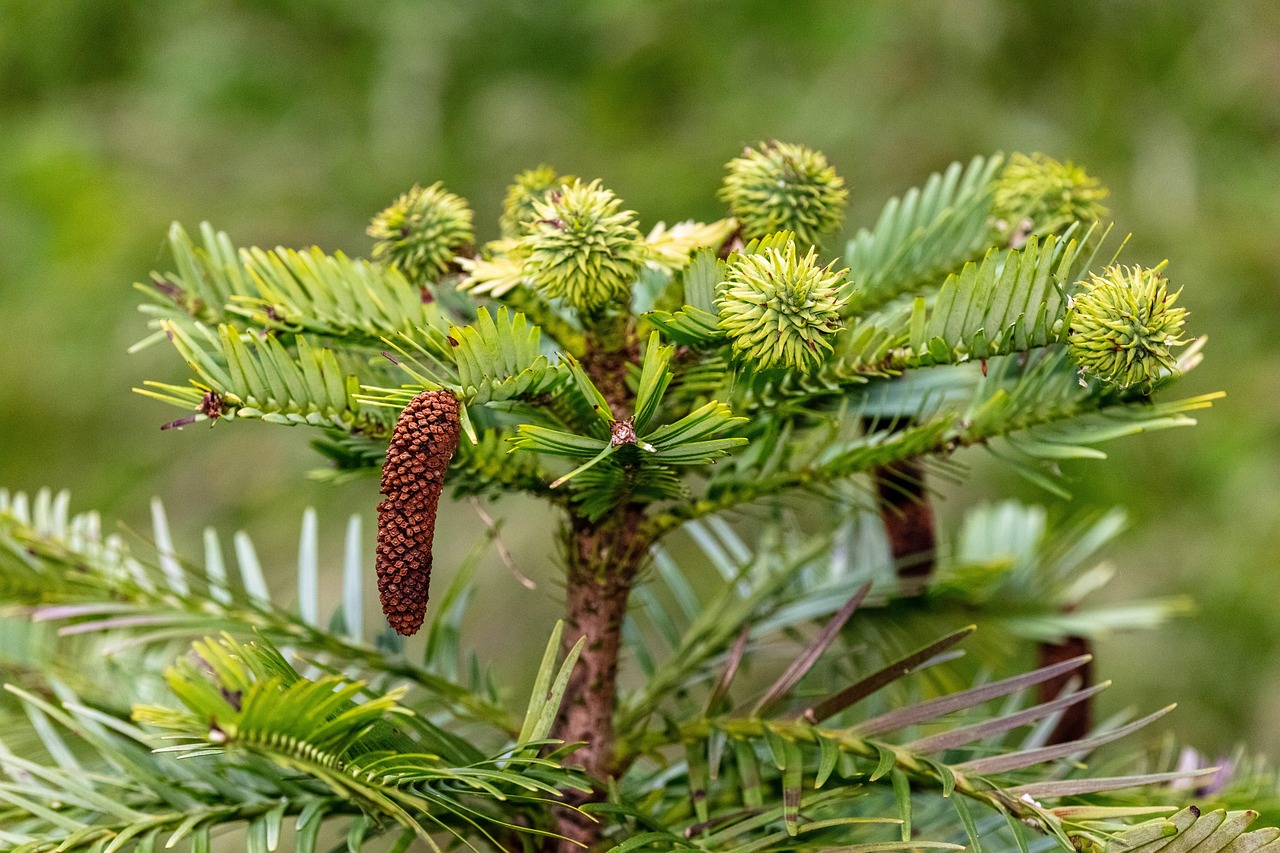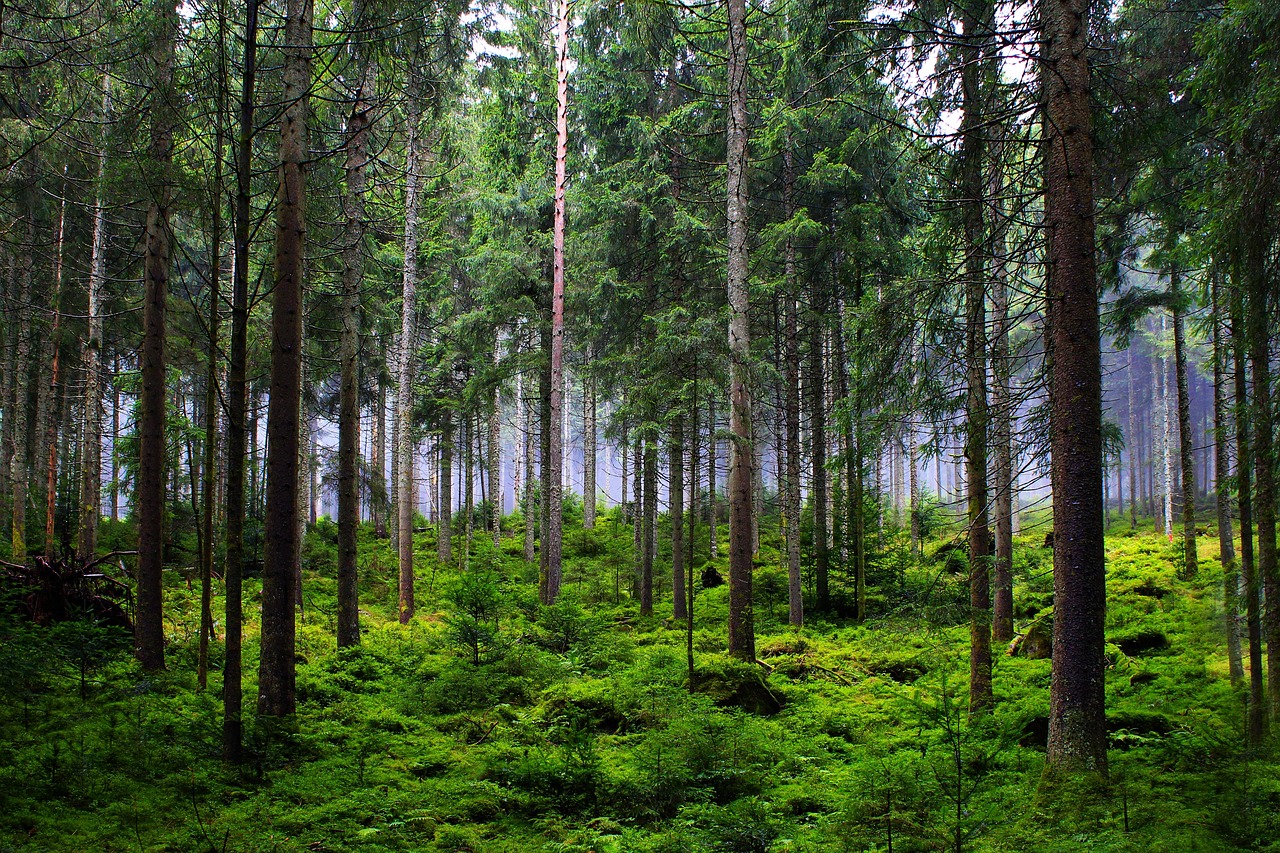Douglas fir trees naturally occur in the western regions of North America, primarily from southern British Columbia in Canada down to central California in the United States. Their range extends eastward to parts of Idaho and Montana, thriving in diverse forest ecosystems.
Geographic Distribution of Douglas Fir Trees

The Douglas fir (Pseudotsuga menziesii) is a prominent coniferous tree that plays a vital role in the forests of western North America. Known for its tall stature and conical shape, it can reach heights of over 300 feet. The species is highly valued for its timber, ecological importance, and aesthetic appeal.
Douglas firs are found in a range of environments, from coastal regions to mountainous areas. These trees prefer well-drained soils and are commonly found in mixed conifer forests. Their adaptability allows them to thrive in various climatic conditions, from moist coastal climates to the drier interior mountains.
The natural habitat of Douglas fir trees encompasses several key regions:
- Coastal forests of British Columbia
- Mountain ranges of the Pacific Northwest
- Inland forests of northern California
- Parts of the Rocky Mountains in Idaho and Montana
Douglas firs often grow alongside other tree species such as western hemlock, Sitka spruce, and western red cedar in coastal areas. In more mountainous regions, you may find them with lodgepole pine and grand fir. This diversity contributes to the rich biodiversity of their native habitats.
The range of Douglas fir trees can be categorized into two primary varieties: the coast variety and the interior variety. Each variety exhibits distinct characteristics suited to its specific environment.
| Variety | Characteristics | Habitat |
|---|---|---|
| Coastal Douglas Fir | Tallest trees, thick bark, larger cones | Moist coastal regions with rich soil |
| Interior Douglas Fir | Smaller stature, thinner bark, smaller cones | Drier, mountainous regions with varied soil types |
The ecological significance of Douglas fir trees extends beyond their size and lumber value. They provide essential habitats for numerous wildlife species, including birds, mammals, and insects. The trees also contribute to soil stability and help in carbon sequestration, making them crucial for environmental health.
In addition to their ecological benefits, Douglas firs are a popular choice for landscaping and reforestation projects. Their aesthetic appeal and ability to thrive in various conditions make them a favored species among both homeowners and land managers.
Understanding the geographic distribution of Douglas fir trees is essential for conservation efforts and sustainable forestry practices. As climate change alters habitats, monitoring these trees will be vital to maintaining healthy forest ecosystems in the western United States and Canada.
Characteristics of Douglas Fir Trees
Douglas fir trees exhibit a variety of characteristics that make them unique and well-adapted to their natural environments. Understanding these traits not only highlights their ecological importance but also sheds light on their value in forestry and landscaping.
Physical Attributes
Douglas firs are known for their impressive height and robust structure. They have a straight trunk, which can reach up to 330 feet in height in optimal conditions. The bark is thick and furrowed, providing protection against various environmental stresses.
- Leaves: The needles are flat, flexible, and can grow up to 3 inches long. They are arranged in a spiral pattern on the branches.
- Cones: The cones of the Douglas fir are distinctive, measuring 3 to 4 inches long with unique three-pronged bracts that extend beyond the scales.
- Wood: The wood is strong, durable, and has a fine grain, making it highly sought after for construction and furniture.
Growth Requirements
Douglas fir trees thrive in specific environmental conditions that support their growth. These requirements influence their distribution across different regions.
- Soil: They prefer well-drained soils rich in organic matter. Acidic to neutral pH levels are ideal for optimal growth.
- Moisture: While they can tolerate dry spells, Douglas firs generally flourish in areas with ample rainfall or adequate irrigation.
- Sunlight: Full sun exposure is essential for healthy development. These trees require at least six hours of direct sunlight daily.
Habitat Preferences
The habitat preferences of Douglas fir trees vary significantly depending on their geographic location. Understanding these preferences helps in identifying suitable areas for planting and conservation efforts.
Coastal Regions
In coastal regions, Douglas firs are commonly found in temperate rainforests. Here, they coexist with other species and benefit from the high levels of precipitation.
- Climate: Mild winters and cool summers characterize these areas, creating an ideal growing environment.
- Companion Species: Common companions include western hemlock, Sitka spruce, and red cedar, which contribute to the biodiversity of the ecosystem.
Interior Mountain Regions
In contrast, the interior regions where Douglas firs grow often feature drier conditions and more extreme temperature variations.
- Climate: These areas experience colder winters and warmer summers, affecting the growth patterns of the trees.
- Soil Types: The soil is often less fertile than in coastal regions, requiring Douglas firs to adapt to varied conditions.
Threats to Natural Populations
Despite their adaptability and resilience, Douglas fir trees face several threats that could impact their populations and distribution.
- Climate Change: Altered weather patterns may affect moisture availability and increase the frequency of droughts.
- Pests and Diseases: Infestations by bark beetles and diseases like root rot can severely compromise tree health.
- Logging Activities: Unsustainable logging practices can lead to habitat loss and fragmentation, threatening the survival of natural populations.
A comprehensive understanding of these threats is crucial for developing effective conservation strategies aimed at protecting Douglas fir trees and their habitats.
In conclusion, recognizing the characteristics, habitat preferences, and threats faced by Douglas fir trees enhances our appreciation for this remarkable species. Continued research and conservation efforts will ensure that these trees remain a vital part of North America’s forests for generations to come.

Ecological Role of Douglas Fir Trees
Douglas fir trees play a critical ecological role in the forests where they are found. Their presence supports a diverse range of wildlife and contributes to various ecosystem functions. Understanding their ecological importance helps highlight why conservation efforts are essential.
Habitat for Wildlife
Douglas firs provide habitat and shelter for numerous species, contributing to the overall biodiversity of forest ecosystems. Various animals rely on these trees for food, nesting, and protection.
- Bird Species: Birds such as woodpeckers, owls, and various songbirds utilize Douglas firs for nesting sites and food sources.
- Mammals: Species like deer, squirrels, and bears often forage in Douglas fir forests, taking advantage of the abundant foliage and seeds.
- Insects: Numerous insects depend on Douglas fir trees for habitat and sustenance, playing a vital role in the food web.
Soil and Water Conservation
Douglas fir trees contribute significantly to soil stability and water conservation. Their extensive root systems help prevent soil erosion, especially on sloped terrains.
- Root Structure: The deep and wide root systems anchor the trees securely, reducing the risk of landslides in mountainous areas.
- Water Filtration: As rainwater filters through the forest floor, Douglas firs aid in filtering pollutants and improving water quality in nearby streams and rivers.
Commercial Importance of Douglas Fir Trees

The economic value of Douglas fir trees is significant due to their high-quality timber. Their wood is prized for various applications, making them a crucial species for both local and regional economies.
Timber Production
Douglas fir wood is known for its strength, versatility, and durability. It is utilized in multiple industries, including construction, furniture making, and paper production.
- Construction: The wood is commonly used for framing, flooring, and roofing due to its structural integrity.
- Furniture: Its attractive grain and finish make it a popular choice for crafting high-quality furniture pieces.
- Pulp Production: Douglas fir is also used to produce paper products, contributing to the forestry industry.
Cultural Significance
Beyond their economic value, Douglas fir trees hold cultural significance for many Indigenous communities. These trees are often associated with traditional practices and beliefs.
- Traditional Uses: Various parts of the tree have been utilized for medicinal purposes, crafts, and construction by Indigenous peoples.
- Cultural Symbols: In some cultures, Douglas firs symbolize strength and resilience, representing a connection to nature and heritage.
Conservation Efforts
Given the importance of Douglas fir trees, several conservation efforts are in place to protect their populations and habitats. These initiatives aim to address threats such as climate change, habitat loss, and invasive species.
Sustainable Forestry Practices
Sustainable forestry practices are crucial for maintaining healthy Douglas fir populations while meeting economic needs.
- Selective Logging: This method minimizes environmental impact by allowing some trees to remain standing while harvesting others.
- Reforestation: Planting new Douglas firs in harvested areas ensures that future generations of trees will thrive.
Protected Areas
The establishment of protected areas helps conserve natural habitats that support Douglas fir trees. National parks and reserves play a vital role in safeguarding these forests.
- Wildlife Corridors: Creating corridors between protected areas allows wildlife to move freely, promoting genetic diversity among populations.
- Restoration Projects: Restoration efforts focus on rehabilitating degraded forest areas to enhance habitat quality for Douglas firs and associated wildlife.
The ongoing commitment to conservation will ensure that Douglas fir trees continue to thrive in their natural habitats while providing essential ecological, economic, and cultural benefits.
Climate Adaptations and Resilience

Douglas fir trees exhibit remarkable adaptations that enable them to thrive across various climates and environmental conditions. These adaptations are critical for their survival, especially as climate change poses new challenges.
Adaptation to Moisture Variability
Douglas firs are particularly adept at managing moisture availability. Their ability to tolerate both wet and dry conditions allows them to inhabit a range of forest types.
- Root Depth: The deep root systems of Douglas firs enable them to access groundwater during dry spells, enhancing their resilience against drought.
- Needle Structure: The flat, flexible needles help reduce water loss through transpiration, making the tree more efficient in moisture utilization.
Temperature Tolerance
Douglas firs have a wide temperature tolerance, allowing them to grow in both cooler and warmer climates. This flexibility is crucial as global temperatures fluctuate.
- Cold Hardiness: These trees can withstand freezing temperatures, which is essential for their survival in northern regions.
- Heat Resistance: While they prefer cooler environments, Douglas firs can adapt to warmer conditions, especially when provided with sufficient moisture.
The Role of Research and Education
Ongoing research and educational initiatives play a vital role in understanding and preserving Douglas fir ecosystems. By expanding knowledge about these trees and their habitats, we can develop more effective conservation strategies.
Research Initiatives
Various organizations and universities conduct research focused on Douglas fir trees, studying aspects such as genetics, growth patterns, and disease resistance.
- Genetic Studies: Understanding the genetic diversity of Douglas firs helps in selecting resilient varieties for reforestation projects.
- Pest Management Research: Research on pest management strategies aids in protecting Douglas fir forests from infestations.
Educational Programs
Educational programs aimed at schools, communities, and landowners promote awareness of the ecological importance of Douglas firs.
- Workshops: Hands-on workshops teach sustainable forestry practices and the benefits of maintaining healthy forest ecosystems.
- Community Engagement: Involving local communities in conservation efforts fosters a sense of stewardship toward Douglas fir habitats.
Conclusion
The geographic distribution of Douglas fir trees reflects their adaptability and ecological significance in the forests of western North America. From their impressive stature to their role in supporting wildlife and providing timber, these trees are integral to both the environment and the economy.
Understanding the characteristics and habitat preferences of Douglas firs enables better conservation efforts. By addressing threats such as climate change, pests, and habitat loss through sustainable practices, we can ensure that these remarkable trees continue to thrive.
As climate conditions evolve, ongoing research and community engagement will be vital to maintain the health of Douglas fir ecosystems. Protecting these trees not only benefits the environment but also preserves a vital part of our natural heritage for future generations.
